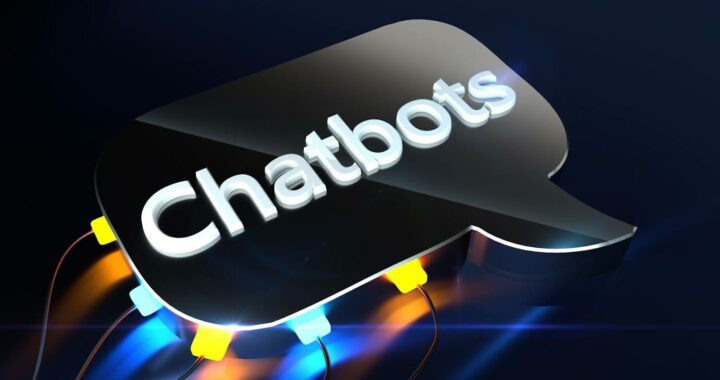
The Benefits of Chatbots
A chatbot is a computer program that simulates conversation with human users through textual or auditory methods. Chatbots have been around for decades, and they have evolved significantly over the years. As they become more sophisticated, they can provide automated assistance to users and even automate mundane tasks.
Let’s explore how chatbots can be used to improve customer experience and streamline business processes.
How to Make a Chatbot
Chatbots are computer programs designed to simulate conversation with human users, and are primarily used to automate communication and improve customer service. Chatbots use natural language processing and machine learning algorithms to understand and respond to user inquiries, giving the impression of interacting with a real person.
The purpose of chatbots is to provide fast and efficient customer support, reduce human error, and lower operational costs. Chatbots can handle simple and repetitive tasks, such as answering frequently asked questions, providing product recommendations, and processing orders. In addition, chatbots can provide 24/7 service, improving the overall customer experience.
Chatbots can also free up human agents to tackle more complex customer requests, leading to greater efficiency and increased customer satisfaction.
Overall, chatbots have become an increasingly popular tool for businesses looking to improve their customer service and reduce costs.
Brief History of Chatbots
Chatbots have come a long way since the 1960s, where they were first conceptualized as simple computer programs capable of simulating human conversations. Today, chatbots are sophisticated Artificial Intelligence(AI)-powered tools that use natural language processing to interact with human users, assist them in various tasks, and provide personalized experiences.
Some of the benefits of chatbots include:
- Increased efficiency- Chatbots can efficiently handle multiple customer queries at once, without the need for human intervention.
- 24/7 Availability- Chatbots can provide round-the-clock customer support, which is not feasible with human customer service representatives.
- Cost-Effective- Once developed, chatbots are incredibly cost-effective to maintain and scale up.
- Personalization: Chatbots use data analytics to provide personalized experiences to individual users, increasing user satisfaction.
- Improved Customer Experience: Chatbots have introduced a new level of convenience and speed to customer support, which has led to improved customer experience and loyalty.
With new advancements in AI technology, chatbots have become an integral part of many businesses’ and customers’ daily lives, revolutionizing the way we think about customer service and the customer experience.
Pro tip- If you’re planning to invest in chatbot technology, make sure to hire a professional development team to ensure maximum efficiency and security.
Why Chatbots are Becoming Increasingly Popular
Chatbots are becoming increasingly popular due to their efficiency in customer assistance, availability, and cost-effectiveness.
Chatbots are computer programs that simulate human conversation and help businesses automate customer service and support. They offer a range of benefits, including:
1. 24/7 Availability: Unlike human customer support representatives, chatbots can provide assistance around the clock, 365 days a year.
2. Fast Response Time: Chatbots can respond to queries and offer solutions in real-time, reducing waiting times for customers.
3. Cost-Effective: Chatbots can handle a high volume of customer queries without the need for additional staff, reducing labor costs.
4. Personalization: Chatbots can analyze user profiles and offer personalized recommendations and solutions.
With these advantages, it’s no surprise that chatbots are becoming increasingly popular among businesses of all sizes. Pro Tip: If you’re looking to integrate a chatbot into your business operations, consider starting with a simple prototype before investing in sophisticated software.

Benefits of Implementing Chatbots
Chatbots are now increasingly being used in customer service, sales, and marketing-related activities.
Chatbots are becoming popular because they are relatively easy to implement, and they can provide quick, accurate, and personalized customer support.
Let us dive into the myriad benefits of chatbots and how they can enhance customer engagement.
Enhanced Customer Engagement
Chatbots offer a plethora of benefits to enhance customer engagement, from providing 24/7 support to increasing efficiency and customer satisfaction.
Here are some of the benefits of implementing chatbots:
1. 24/7 Availability: Chatbots are available round the clock, allowing businesses to provide instant support to their customers without any delay.
2. Increased Efficiency: Chatbots can handle multiple customer inquiries and complaints at the same time, reducing wait times and increasing efficiency.
3. Personalized Experience: Chatbots can use customer data to personalize interactions and tailor responses to meet the customer’s specific needs.
4. Improved Customer Satisfaction: Chatbots provide quick and convenient solutions to customers, leading to increased satisfaction and loyalty.
5. Cost-Effective: Chatbots can handle a large volume of interactions without requiring additional staff, making them a cost-effective solution for businesses of all sizes.
Increased Efficiency
Implementing chatbots in business operations can increase efficiency in several ways.
1. 24/7 availability: Chatbots can operate around the clock and provide customer support, which means that customers never have to wait for business hours to receive assistance.
2. Reduced response time: Chatbots can instantly respond to customers’ queries, saving valuable time and improving customer satisfaction.
3. Personalization: Chatbots can use customer data to provide personalized recommendations and support, improving the overall customer experience.
4. Multi-tasking: Chatbots can handle multiple queries simultaneously, reducing the need for human employees to juggle multiple tasks at once.
5. Cost-effective: Chatbots can save on labor costs, freeing up human employees to focus on more complex tasks while the chatbots handle simple customer inquiries.
Pro Tip: Before implementing chatbots, it is essential to determine the specific goals and functions of the chatbots to maximize their efficiency and ensure that they align with business objectives.
Time & Cost Savings
One of the biggest benefits of implementing chatbots on your website or social media platforms is the significant time and cost savings that they can provide.
Chatbots can handle a large volume of customer inquiries, allowing your customer support team to focus on more complex issues. This can result in faster response times, improved customer satisfaction, and reduced operating costs.
Additionally, chatbots can operate 24/7 without the need for breaks or downtime, making them a valuable asset for businesses that operate in different time zones or need to provide around-the-clock support.
By automating routine tasks and providing quick, accurate responses to customers, chatbots can also help increase employee productivity and overall business efficiency.
Overall, implementing chatbots can lead to significant cost and time savings, as well as improved customer service and business operations.
Different Types of Chatbots
Chatbots come in a variety of types, each with its own purpose and capabilities. From AI-based conversation bots to rule-based bots, there’s a type of chatbot available to suit the needs of any business.
In this section, we’ll explore the different types of chatbots and how they can be used to provide valuable services to customers.
Rule-Based Chatbots
Rule-based chatbots are chatbots that use a pre-defined set of rules to answer customer questions based on specific keywords or phrases. While these chatbots are less advanced than their AI-powered counterparts, they offer several benefits for businesses looking to automate customer support.
Here are a few reasons why you might choose a rule-based chatbot over other types of chatbots:
1. Easy to set up: Rule-based chatbots are relatively easy to set up and don’t require significant programming or AI expertise to create.
2. Cost-effective: These chatbots are often less expensive to develop and maintain than AI-powered chatbots.
3. Consistent: Rule-based chatbots always follow the same set of rules, ensuring consistent answers to customer questions.
4. Scalable: These chatbots can handle a high volume of customer inquiries and are easily scalable to meet growing demand.
While rule-based chatbots may not have the same level of sophistication as AI-powered chatbots, they offer several advantages for businesses looking to improve customer support while keeping costs low.

AI-Powered Chatbots
AI-powered chatbots are computer programs designed to simulate human conversation in real-time, with the help of artificial intelligence and machine learning. There are two types of chatbots: rule-based and self-learning. Rule-based chatbots are programmed to respond only to specific questions or commands, while self-learning chatbots use machine learning algorithms to learn from past conversations and improve their future responses.
The benefits of chatbots are many fold. Chatbots help to automate customer service and support, reducing response time and increasing customer satisfaction. They can also provide personalized recommendations based on user preferences, saving time and effort. Chatbots can handle thousands of conversations simultaneously, eliminating the need for human agents to manage each one individually. Finally, chatbots are available 24/7, allowing businesses to provide seamless support to their customers without downtime.
Pro tip: Integrating chatbots on your website can significantly improve customer experience and drive sales.
Hybrid Chatbots
Hybrid chatbots are the latest trend in the world of chatbots, combining the best of rule-based and AI-based chatbots to provide a seamless and personalized user experience.
There are two types of hybrid chatbots:
1. Rule-based chatbots with AI assistance – These chatbots use pre-determined rules and workflows to provide quick and accurate responses to user queries. They are also equipped with AI-powered natural language processing (NLP) to handle more complex queries and improve their response quality over time.
2. AI-based chatbots with rule engine – These chatbots are powered by machine learning and deep learning algorithms to provide more intelligent and natural conversations with users. They also have a rule engine that allows them to fall back on pre-determined rules when needed, ensuring accuracy and consistency in their responses.
The benefits of using hybrid chatbots include improved user engagement, reduced support costs, increased efficiency and productivity, and a better overall user experience.
Chatbot Development
Chatbot development is a way to create automated conversations with customers or potential clients. It is becoming increasingly popular as it allows brands to better interact and engage with their customers. It can also help to reduce customer service costs.
Let’s dive into the details and see why chatbot development is such a beneficial tool.
Choosing a Chatbot Platform
Choosing the right chatbot platform can be a critical decision to make when considering chatbot development for your business. The platform you choose will determine the features and capabilities available, the ease of development, and the potential for customization. Here are some factors to consider when selecting a chatbot platform:
Natural Language Processing (NLP) Capabilities – Platforms with robust NLP capabilities can better understand customer inquiries and respond more accurately.
Integrations – Look for a platform that integrates seamlessly with your existing systems and tools to avoid complexity during development.
Customization – Consider platforms that allow customization to match the voice, tone, and branding of your business for a more human-like chatbot.
Analytics and Insights – Choose a platform that provides analytics and insights into chatbot performance to continually improve customer engagement.
User Interface (UI) – Pick a platform with an intuitive user interface that makes it easy to develop and update your chatbot.
Pro Tip: Prioritize comprehensive research and testing to determine the most suitable chatbot platform to achieve your business objectives.
Identifying User Needs and Intents
One of the key factors to consider when developing a chatbot is identifying the user’s needs and intents. This involves understanding the purpose of the chatbot, as well as anticipating the types of questions and requests the user will have.
To identify user needs and intents, you can follow these steps:
- Conduct user research to identify common questions, pain points, and goals.
- Develop user personas that represent different segments of your target audience.
- Create a list of possible user intents and map them to specific actions or responses.
- Use natural language processing and machine learning algorithms to train your chatbot to recognize and respond to various user intents.
- Regularly analyze user data and feedback to refine your chatbot’s ability to identify and address user needs and intents.
Pro tip: Consider offering users the option to provide feedback and ratings for the chatbot’s effectiveness in identifying and addressing their needs. This can help you improve the chatbot’s performance over time.
Designing the Chatbot Conversation Flow
Designing a chatbot conversation flow is an essential part of chatbot development that can reap numerous benefits for your business. The chatbot conversation flow is the sequence of questions and responses that a chatbot uses to help customers achieve their objectives.
Here are the benefits of designing a chatbot conversation flow:
- Increased user engagement: A well-designed chatbot conversation flow enhances user engagement by guiding them through a smooth and intuitive conversation that keeps them engaged.
- Improved user experience: A chatbot with a well-designed conversation flow provides a seamless user experience that improves customer satisfaction.
- Time-saving: Chatbots can handle multiple conversations at once, thus saving customers’ time and resources.
- Cost-saving: Developing a chatbot conversation flow is a one-time investment that can assist customers indefinitely, thus reducing the need for additional human resources.
Designing a chatbot conversation flow is crucial to ensure that customers receive effective and efficient assistance while interacting with your business.
Building a Chatbot
Building a chatbot is becoming increasingly popular as a way to automate customer service and marketing tasks.
Chatbots can help companies improve customer support, increase website engagement, and drive sales.
In this article, we’ll cover the basics of how to make a chatbot, the benefits of building one, and the best practices for creating an effective and user-friendly chatbot.

Pre-Built Chatbot Solutions
Pre-built chatbot solutions are a cost-effective and time-efficient way to build a chatbot for businesses of all sizes. Some of the benefits of using pre-built chatbot solutions include:
1. Saves time and resources – Pre-built chatbots come with pre-designed conversation flows and automation features, saving you the time and effort that goes into customizing a chatbot.
2. Lowers cost – Pre-built chatbots eliminate the need for a team of developers, saving you the significant cost of hiring technical staff and investing in chatbot building tools.
3. Easy customization – Pre-built chatbot solutions provide the flexibility of easy customization, enabling you to tailor the design and conversation flow to your specific business requirements.
4. User-friendly interface – Pre-built chatbot solutions have a user-friendly interface that makes it easy to manage and update your chatbot as needed.
With pre-built chatbot solutions, businesses can quickly integrate chatbot technology into their operations, delivering better customer support, collecting user data and streamlining processes.
Custom Chatbot Development
Custom chatbot development is a unique and specialized field that involves creating a chatbot that is tailored to meet the specific needs of a business.
Building a custom chatbot is beneficial in several ways:
- Improved customer service – Custom chatbots are designed to interact with customers in a conversational manner, providing them with helpful and relevant information in real-time. This can lead to increased customer satisfaction and loyalty.
- Increased productivity – Chatbots can handle repetitive tasks such as answering frequently asked questions and directing users to the right resources, freeing up human agents to focus on more complex tasks.
- 24/7 availability – Chatbots can operate around the clock, providing users with assistance even outside of business hours.
- Cost savings – By automating certain tasks and reducing the workload on human agents, custom chatbots can help businesses save on labor costs over time.
- Customizability – Custom chatbots can be tailored to fit the unique needs of a business, making them more effective and efficient in their interactions with customers.
Integrating a Chatbot into an Existing Platform
Integrating a chatbot into an existing platform is an excellent way to improve user engagement, streamline customer support, and reduce workload. Building a chatbot requires clear objectives, well-defined workflows, and the right set of tools.
Here are the benefits of chatbots:
Improved customer support: Chatbots can assist customers in real-time, providing them with instant solutions to their queries and concerns. This reduces the response time and improves customer satisfaction.
Better user engagement: Chatbots can initiate conversations with users, provide them with relevant information, recommend products, and offer discounts, thereby improving user engagement.
24/7 Availability: Chatbots are available 24/7, unlike human agents. This allows users to get support and assistance whenever they need it.
Reduced workload: Chatbots can handle mundane and repetitive tasks such as scheduling appointments, answering frequently asked questions, and processing orders, freeing up human agents to handle more complex issues.
Pro tip: Choose a chatbot building platform that offers a drag-and-drop interface, pre-built templates, and robust analytics to create a chatbot that meets your business needs.
Best Practices for Chatbot Development
Chatbots are becoming increasingly popular and can offer a number of benefits to businesses. Developing a chatbot requires careful thought and planning to ensure it is successful and to maximize its potential.
In this article, we will discuss the best practices you should follow when developing your own chatbot. We will also consider some of the pitfalls to avoid and the advantages of using a chatbot.
Utilizing Natural Language Processing
Utilizing natural language processing (NLP) is a best practice for chatbot development, as it enables chatbots to understand and respond to user queries in a more realistic and human-like manner.
With NLP, chatbots can interpret complex language patterns, understand context, and generate appropriate responses. This makes chatbots more effective and efficient in resolving customer queries and aiding customers in their purchase journey.
In addition to improving the user experience, NLP-powered chatbots can also benefit businesses in numerous ways. They can reduce the workload on customer support teams, save time and resources, and enhance overall productivity.
Furthermore, chatbots can gather valuable user data and insights, such as customer preferences and buying behavior, that can help businesses make more informed marketing and sales decisions.
In conclusion, utilizing natural language processing in chatbot development can provide numerous benefits for both users and businesses.
Training Your Chatbot
Training your chatbot is a crucial part of chatbot development that helps improve its accuracy, response time, and overall user experience. Here are some best practices to follow while training your bot:
1. Start with a clear goal – Define the primary objective of your chatbot and build its training dataset around that goal.
2. Use natural language – Incorporate natural language processing (NLP) and machine learning techniques to understand and respond to user queries accurately.
3. Include fallbacks – Create fallbacks and error handling mechanisms to handle ambiguous or unclear user inputs.
4. Monitor user interactions – Monitor user interactions regularly to identify common user queries and improve the bot’s response accuracy.
Benefits of chatbots include improved customer experience, cost savings, and increased efficiency. By following the best practices for training your chatbot, businesses can leverage these benefits to enhance their services and customer satisfaction levels.
Testing Your Chatbot
Testing your chatbot is a crucial step in ensuring its effectiveness and improving the user experience. Here are the best practices for chatbot development testing:
1. Define clear objectives and use cases: Define and prioritize the use cases, scenarios, and user journeys that your chatbot will handle.
2. Test the bot with real users: Conduct user testing sessions with a diverse group of people to identify bugs, errors, and areas of improvement.
3. Test the bot’s limits: Test your chatbot’s response time, scalability, and ability to handle and understand misspelled or vague queries.
4. Monitor and analyze: Monitor the chatbot’s performance, track the user’s feedback, and analyze the data to improve the bot’s accuracy and relevance.
By following these steps, you can ensure that your chatbot performs optimally, is engaging to the users, and delivers an exceptional customer experience.
Pro tip: Regular testing and tweaking of the chatbot not only enhances its performance but also helps you to stay up to date with your customer’s needs and preferences.
Future of Chatbots
Chatbots have become increasingly popular in recent years, with businesses embracing them as a way to communicate with customers more efficiently. With advances in artificial intelligence, businesses are able to develop powerful chatbots that can provide natural and personalized interactions with customers.
As the technology continues to evolve, we can expect chatbots to play a larger role in customer service. Let’s take a closer look at the Future of chatbots.

Advancements in AI and NLP
With the recent advancements in Artificial Intelligence (AI) and Natural Language Processing (NLP), chatbots are poised to become even more intelligent and capable in the near future. These advancements are set to revolutionize the way businesses communicate with their customers and redefine customer support.
Here are some key benefits of chatbots:
1. Available 24/7: Chatbots can provide support and assistance to customers around the clock, reducing response times and improving customer satisfaction.
2. Cost-effective: Chatbots are an affordable alternative to hiring customer service representatives, making it possible for businesses of all sizes to provide quality support to their customers.
3. Personalization: Advanced NLP algorithms enable chatbots to interpret and respond to user queries in a personalized manner, improving the overall user experience.
As AI and NLP continue to evolve, chatbots will become even more intelligent and capable, making them an indispensable tool for businesses.
Industry-Specific Chatbots
Enterprises across industries are embracing chatbots to offer better customer service by automating various customer interactions. Industry-specific chatbots are a step forward in personalized customer engagement in various sectors. Here’s how different industries benefit from chatbots:
Retail: Chatbots can offer personalized product recommendations, track orders, process payments, offer shopping advice, and handle after-sales services.
Healthcare: Healthcare chatbots can offer instant medical advice, offer diagnosis based on symptoms, help consumers manage their medication, and provide dietary suggestions.
Banking: Banks can use chatbots for answering account-related queries, provide banking advice, offer financial planning guidance, process payments and offer investment recommendations.
Travel: Chatbots can guide travelers with booking flights, hotels, and other travel-related services. They can offer personalized travel recommendations and handle customer complaints.
Industry-specific chatbots provide better customer service, reduce response times, and offer personalized experiences leading to a competitive advantage for businesses.
Integrations with Other Technologies
Chatbots have become an increasingly popular tool for businesses to communicate with customers, and their potential for integration with other technologies is making them even more powerful. Integrating chatbots with other technologies can streamline business operations, improve customer service, and allow for more personalized interactions.
Here are some examples of chatbot integrations:
1. Integration with CRM systems: Chatbots can help manage and respond to customer inquiries, and integrate with CRM (Customer Relationship Management) systems to improve data gathering and customer management.
2. Integration with AI and Machine Learning: Chatbots can be enhanced with AI and machine learning capabilities, allowing for more natural language communication and more accurate responses.
3. Integration with Voice Assistants: Chatbots can also be integrated with voice assistants like Siri and Alexa, allowing for hands-free communication and expanded accessibility.
With chatbot integrations, the future of chatbots is promising, as businesses can continue to improve operations and customer experience. Pro Tip: To stay ahead of the competition, businesses should invest in chatbot integrations and explore new ways to incorporate this technology into their operations.
Conclusion and Final Thoughts on Chatbots
In conclusion, chatbots are an incredibly useful tool for businesses looking to improve their customer engagement and overall efficiency. The benefits of chatbots are numerous; they provide 24/7 customer support, reduce response times, and increase customer satisfaction. Additionally, chatbots can be customized to suit the specific needs and goals of each business, making them a powerful and versatile tool.
With the advancement in natural language processing (NLP) and machine learning, chatbots are becoming more intelligent, and their abilities will only improve with time. As customer expectations continue to evolve, chatbots will become an essential tool for businesses looking to remain competitive and provide the best possible customer experience.
In summary, chatbots are here to stay and have the potential to transform the way businesses interact with their customers. By leveraging the benefits of chatbots, businesses can increase productivity, reduce costs, and enhance the overall customer experience.
Pro tip: When implementing chatbots, ensure that they are user-friendly and can provide relevant information to customers quickly.





